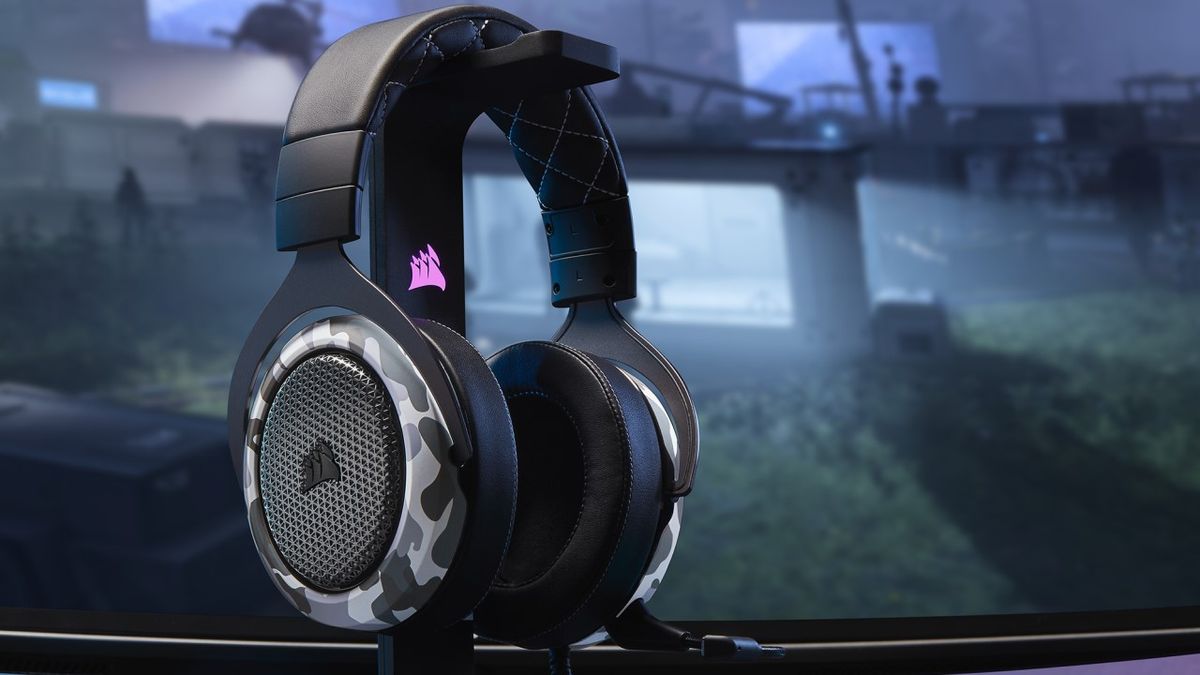12DOVE Verdict
An exciting foray into haptic feedback headsets from Corsair that provides a fun and very enjoyable game-first audio experience.
Pros
- +
Haptic tech isn't just a gimmick
- +
Great pairing for shooters
- +
Solid HS60 foundations
Cons
- -
A bit specialised
Why you can trust 12DOVE
Haptic feedback isn’t a new idea in games - see: N64 Rumble Paks - but strapping those Rumble Paks to your ears certainly is. This trend began with Sony and Razer headsets taking exploratory forays into designs in which a combination of software and hardware translated audio cues into force feedback for… well, for your head.
While it sounds like a recipe for a few hours laying very still in a dark room with some pain killers, the reality is, and I’m as surprised writing this as you are reading it, quite pleasant. Corsair calls the proprietary tech powering these H60 Haptics ‘taction technology’. It’s anyone’s guess what that means, but I’m pleased to report that as a concept, it’s only about 30% as silly as it sounds and does make a case for this Corsair set being a special contender for best PC headset for gaming going right now.
Design & Features
Bass rumble aside, this latest model in Corsair’s headset lineup is nearly identical to the existing HS60. The 50mm drivers give you a 20Hz-20KHz spectrum sweep, grille panels on the earcups lend an industrial look, and as should always go without saying for Corsair, the quality control is insanely high. The stitching on the inner headband of our review model is absolutely flawless, and the combination of matte plastic, brushed gunmetal aluminium, and leatherette makes for a headset that looks like it costs at least as much as its £120 price tag.
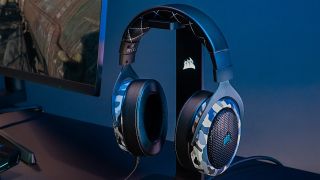
As for whether the all-new camo print finish can be considered a plus is, of course, a deeply subjective debate. But what it does tell you about the HS60 Haptic is that much like haptic tech itself, a younger audience is the focal point here.
Performance
Let’s get to the USP. The level of haptic feedback can actually be adjusted using a scroll wheel at the rear of the right earcup, and when turned all the way down the rumble is disabled. Maxed out, though, it adds another dimension to the experience. It’s somewhere between the feeling of sitting near a cranked subwoofer and really smartly programmed force feedback through a pad. Definitely a sensory experience rather than an auditory one, and it’s impressively sensitive to the audio going through it.
In Battlefield 5, all those whizzing bullets, far-off grenade explosions, and rattling gunfire are modelled in a really precise way, such that firing a machine gun gives you a rhythmic thud-thud-thud against your temples and vehicle projectiles rumble in a deeper sense. Older games, designed with lower quality audio samples and less sophisticated tech, do still produce an impressively nuanced haptic experience, but to get the best from these HS60 Haptics, you’ll be looking at newer titles with big budgets and massive audio sample libraries.
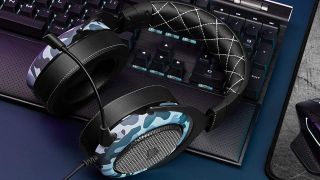
You can also deploy that haptic head-massaging in music, where drum n bass and hip hop elicit some skull-numbing frequencies, but it’s a very different experience to simply listening to music through bass-heavy headphones or a stereo system with a subwoofer. As with games, it’s a tactile effect, so it’s not best suited to music.
And yes, you can turn the haptic stuff off with that scroll wheel when you want to use these like regular headphones, but that means turning off the USP - and the price premium that comes with it. While they sound decent as stereo headphones in their own right, they don’t quite ‘clean up’ or offer the clarity you might hope for from an all-rounder headset.
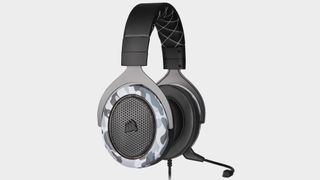
Overall - should you buy it?
Which makes this a specialist product that’s a lot of fun when used for its intended purpose. While it might not be the very best gaming headset going, you could have an amazing weekend with these and the latest shooter, immersing yourself in the soundstage in a way that’s still new and exciting, and have few regrets about the money you spent on them even if you went back to a different headset for your Spotify and Netflix sessions.
Phil Iwaniuk is a multi-faceted journalist, video producer, presenter, and reviewer. Specialising in PC hardware and gaming, he's written for publications including PCGamesN, PC Gamer, GamesRadar, The Guardian, Tom's Hardware, TechRadar, Eurogamer, Trusted Reviews, VG247, Yallo, IGN, and Rolling Stone, among others.

Despite Zelda: Majora's Mask basically being a horror game, one of its key devs didn't think its creepiest features were scary at all: "People on the team were like 'whoa!'"

Corsair exec says GTA 6 is coming to PC in early 2026 and then quickly un-says that
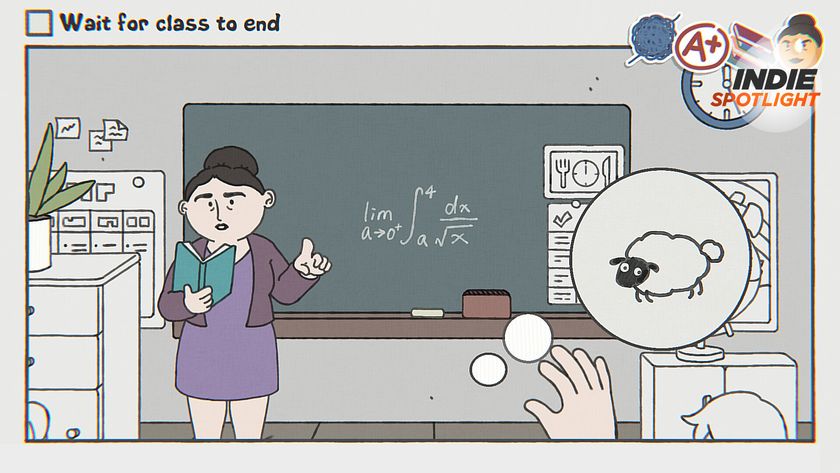
This puzzle game has done the impossible: waiting around for something to happen has never, ever been this fun
Most Popular





